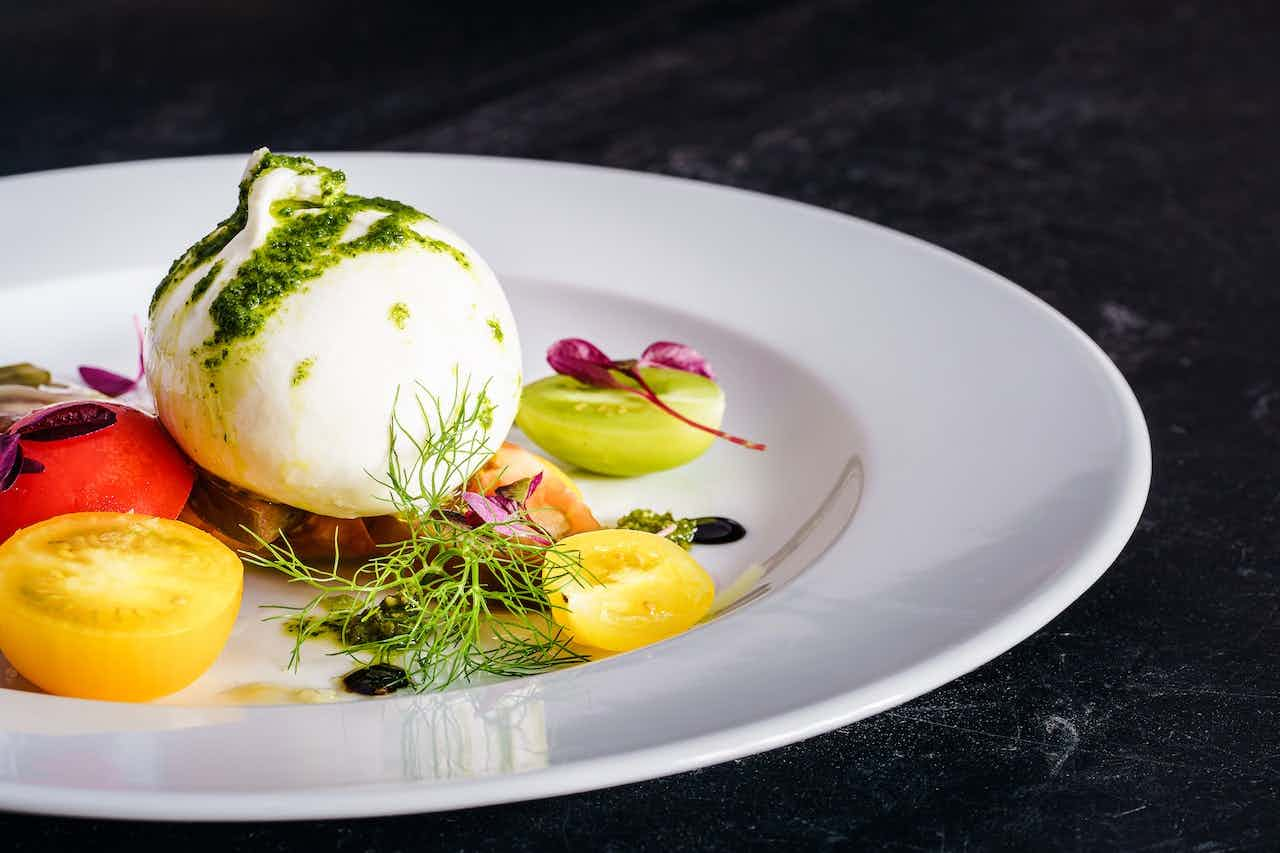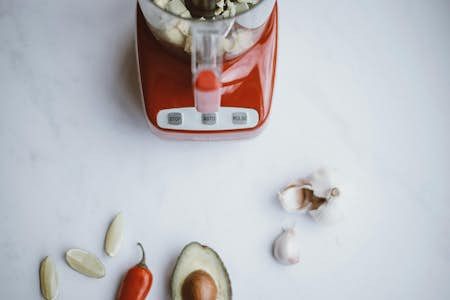It’s 1999. Maximilian Truckle sits back and lets his mind wander over his vast food empire. He has scaled the heady heights of US dairy comestibles. There‘s nobody to touch him. Maxi Truckle is the Big Cheese.
What Maxi can’t shake, though, is the feeling that there’s a game-changing cheese just around the corner. He just couldn’t put his finger on it (or in it - it might be soft, after all).
Fast forward to the present, and we can see that Maxi was right. A cheese would shortly burst forth onto the international stage that would make other cheeses seem a little ordinary. A cheese to churn cheese-eschewers into cheese champions. A cheese to please. Welcome to the Age of Burrata.
We’ll take a deep dive into burrata (best wear a hairnet) and see what this cheese that’s charmed the world has to offer. We’ll learn about its history and see exactly how cheesemakers go about crafting this dairy delight. Let’s dig in.
So, burrata - what is it?
For many years, Italian cheese was all about two or three formaggio fellas - mozzarella, parmesan, and, possibly, gorgonzola. Yes, we know there are plenty of others. Ricotta, for one. Dolcelatte’s another. And taleggio.
Alright, there are over 1000 types of Italian cheese. But those first three were the ones everybody’s known about since Romulus and Remus were bickering infants.
They had the situation covered: mozzarella for your pizza, parmesan for your pasta, and gorgonzola for any situation requiring a mind-blowingly tasty blue cheese. But, all of a sudden, the cheeseboard’s been turned right over with the arrival of burrata.
This wonderfully white cheese looks like fresh mozzarella until you cut into it, whereupon a world of oozy goodness will spill all over your plate. What you’ve unleashed there is a tidal wave of cream and curds, which will transform any salad into something the gods might have been proud of cooking up in the Mount Olympus kitchen.
What does burrata taste like?
It starts by tasting a lot like mozzarella. Big deal, you may be thinking. I’ve been chewing this stuff since I had my first Totino’s. Think again, pizza-pal. This cheese has an underlying creaminess and sweetness that then takes over and makes mozzarella seem like an old shoe. Well, near enough.
Shannon Berry, Wisconsin Cheese Specialist, says, “Burrata means "buttery" in Italian -- It is like the lush, luxurious cousin of fresh mozzarella. In fact, it's made of fresh mozzarella curd, stretched a centimeter thin and stuffed with milky, creamy stracciatella."
What burrata delivers is a soft taste sensation courtesy of the gooey center. As mentioned, its name comes from the Italian for butter, so this gives you an indication of the taste territory we’re heading into.
It also tells you all you need to know about what one of the best things you can do with it is. No, not loosen a tight ring around a plump finger. No. Just get some crusty Italian bread and smother it with burrata, with a good olive oil drizzle on top.
Not a bad idea to warn your neighbors so they’re not alarmed by the screams of delight you issue all lunchtime. They’ll have what you’re having.
Is burrata new?
In terms of making a big milky splash in the international cheese fanciers’ world, burrata is a new curd on the block. But its history goes back a few years.
Most cheese historians (these are specialists, not Monterey Jacks-of-all-Trades) trace the birth of the burrata to the southern region of Puglia, in the sub-region of Murgia, within the territory of Apulia, near the city of Andria, on Bianchini Farm, in the second shed from the chicken huts.
While we have admirable geographic specificity, the date is a little more hazy. Suffice it to say that at some point in the first half of the twentieth century, a farmer used some fresh cheese thinking to use up scraps left over from the farm’s mozzarella production process.
He hit on the idea of combining the scraps with cream and popping them in a cheesy pocket (a lot nicer than this sounds), and the burrata came into gorgeously gloopy existence.
How is burrata made?
Just like mozzarella, it takes buffalo milk to make burrata cheese. The buffalo cow gives forth the goods, and the dairy farmer gets to work, adding rennet and cultures. The warm, fresh cow’s milk then goes through a bit of a transformation, curdling, separating, and generally starting to look very unappetizing indeed.
The next step is to remove the whey, leaving the curds, which are warmed with hot water and stretched (to make what’s known in Italian as stracciatella) and eventually to form pouches. Fresh cream and little mozzarella curds go into these before the cheesemaker seals the pouches off. That’s it. It sounds simple, but there’s a whole lot of artistry that goes into every perfect pocket.
What to do with burrata?
OK, so we’ve mentioned the crusty bread. That’s enough for us.
But if you want to branch out, here are a few burrata recipe ideas. Combine a burrata with fresh tomatoes and fresh basil, and you have a totalmente fresh burrata salad that is fabulous as an appetizer or a starter. It makes an interesting change from the much more common Caprese salad.
Burrata is great with other cheeses too. Try it mixed with goat cheese and tagliatelle for a wonderful pasta treat. Top with a little pesto and have alongside a fresh glass of Frascati. That’s about as dolce as la vita gets.
For carnivores, there’s a meaty match with good prosciutto, the sharpness of the latter contrasting beautifully with the creamy center of the burrata.
So, there are some great ways to eat burrata, and you’re unlikely to have any left. Don’t be tempted to stick it in the freezer if you do. It won’t be happy there. Instead, wrap and store in the refrigerator. The shelf life’s ten days maximum, but try to finish it within two days to enjoy it at its best. And always let it come up to room temperature before you chow down.
Done with the greatest of cheese
If you like cheese that makes you feel like a member of the Italian glitterati, you need to get some burrata onto your plate, presto. It works so well in a great range of recipes it’s a wonder we haven’t all been eating it for years. So, say ciao to other cheese and buongiorno to burrata.
It’s been a long time in getting the recognition it deserves, but it’s now made its creamy canter to the front rank and is deservedly taking its place among the world’s finest luxury cheeses. Whey to go, burrata!
Image Credit:pexels-sebastian-coman-photography-3669501 on Pexels






